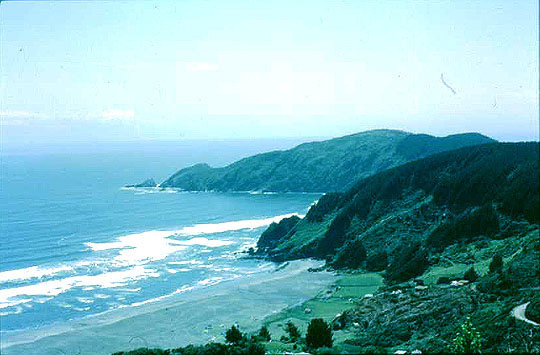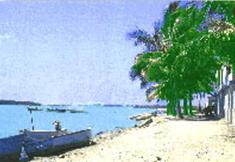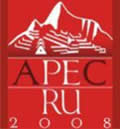United Kingdom
| Welcome |
| Peru in Brief |
| History |
| Geography |
| Government & Politics |
| Maritime delimitation between Peru and Chile |
| News |
Links |
| TUMBES | |||
 |
|||
| Capital: | Tumbes | ||
| Elevation: |
5 m | ||
| Climate: |
Temperatures average 32°C during the summer (December-April) and 25°C in winter (June-August). Summer is also the wet season and may be characterised by torrential rains. |
||
| History: |
In pre-colonial times the area had been heavily settled by communities devoted to hunting, agriculture and commerce. The Tumpis were excellent coastal navigators and were highly skilled in carving seashells. During the reign of Pachacutec the Incas extended their dominion to Tumbes. Under Inca rule, roads, houses and temples were built and hydraulic engineering works undertaken. |
||
The Spaniards' own conquest of the Incas began precisely here, in Tumbes. Francisco Pizarro landed on the coast in 1532 but, on that occasion, met with fierce resistance from the natives led by the Cacique Chilimaza. In departing, Pizarro planted a cross on the beach that now bears the name of La Cruz. |
|||
When the time for emancipation arrived, the people of Tumbes supported the cause championed by Jose de San Martin . On January 7, 1821 , Tumbes (which was then a part of the department of Piura ) formally proclaimed independence. |
|||
On November 25, 1942 Tumbes was accorded departmental status by President Manuel Prado with the approval of the Peruvian Congress. |
|||
| Places of Interest: | Cabeza de Vaca Archaeological site. The ruins are sutuated in the cradle of the Tumpis culture and are thought to have once been a beautiful, web fortified city. Large and small terraces are visible, their containment walls built with quadrangular adobe bricks held together by small stones. An extensive structure consisting of three platforms may be the remains of a temple. |
||
| The Cathedral. The high altar in this altogether modern building presents elaborate baroque-style woodwork. | |||
| Plaza de Armas. An ample, spacious square adorned with many kinds of exotic flowering plants. | |||
| Plazuela Bolognesi. An attractive, picturesque little plaza in the middle of which is the monument honouring the hero Francisco Bolognesi . A modern Hotel de Turistas is on one side. | |||
| NATURAL ATTRACTIONS | |||
 |
|||
| Tumbes beaches | |||
Tumbes River. As the river approaches the Pacific its banks become overgrown with exuberant mangrove and jeli, whose tangled roots constitute the habitat of a wide variety of molluscs, crustaceans and fish. |
|||
Mangrove Swamps. On both sides of the Tumbes delta and extending all the way to the International Canal at Punta Capones , an amazing water flora covers the landscape. Black shells abound in this area. |
|||
Los Esteros. These are channels that run inland with the tides. |
|||
Los Manglares National Sanctuary. A total of 2972 hectares of mangrove swamps have been placed under protection in an effort to preserve a significant sample of the mangrove ecosystem. |
|||
Cerros de Amotape National Park. Extending from the left bank of the Tumbes, the park aims to preserve the huge variety of plant and animal life typical of a dry equatorial woodland environment. Endemic species include the Tumbes crocodile. the white-winged turkey and the river otter, Cerros de Amotape national park is superbly suited for adventure and conservation-minded tourism. |
|||
Tumbes National Forest. Located in the north-eastern section of the Tumbes basin near the border with Ecuador , this area contains several different types of forest. The flora is thus immensely varied and dazzling, ranging from tropical orchids to exotic timber species such as Hualtaco. Charan and Oreja de León. Ocelot, mono coto. skunk, and the Andean condor may be observed during the trip along the forest road from Tumbes to the Cabuyal area. Caucho and Bocana represent two other excellent bases for the adventure-loving or scientifically-minded tourist. |
|||
Hot Springs. Only 5 km from Bocapan (Zorritos) and easily accessible, the springs consist of small pools of continuously-boiling water. Because of its temperature and high mineral content, the water is effective against rheumatic pain and skin ailments. Hot springs are also found at Tronco Mocho. |
|||
Beaches. Tumbes offers pristine beaches that are sunny the year round yet cooled by a delightful ocean breeze. The best-known are Puerto Pizarro - Isia del Amor – Playa Hermosa - Playa La Cruz - Playa Puerto Loco - Playa de Zorritos - Playa Punta Mero - Playa Cancas and Playa Punta Sal, whose white sands, warm, clear waters and rich fish life (including the prized merlin) set it in a class of its own. Good-quality tourist facilities are found in this area. |
|||
| <BACK> | |||





